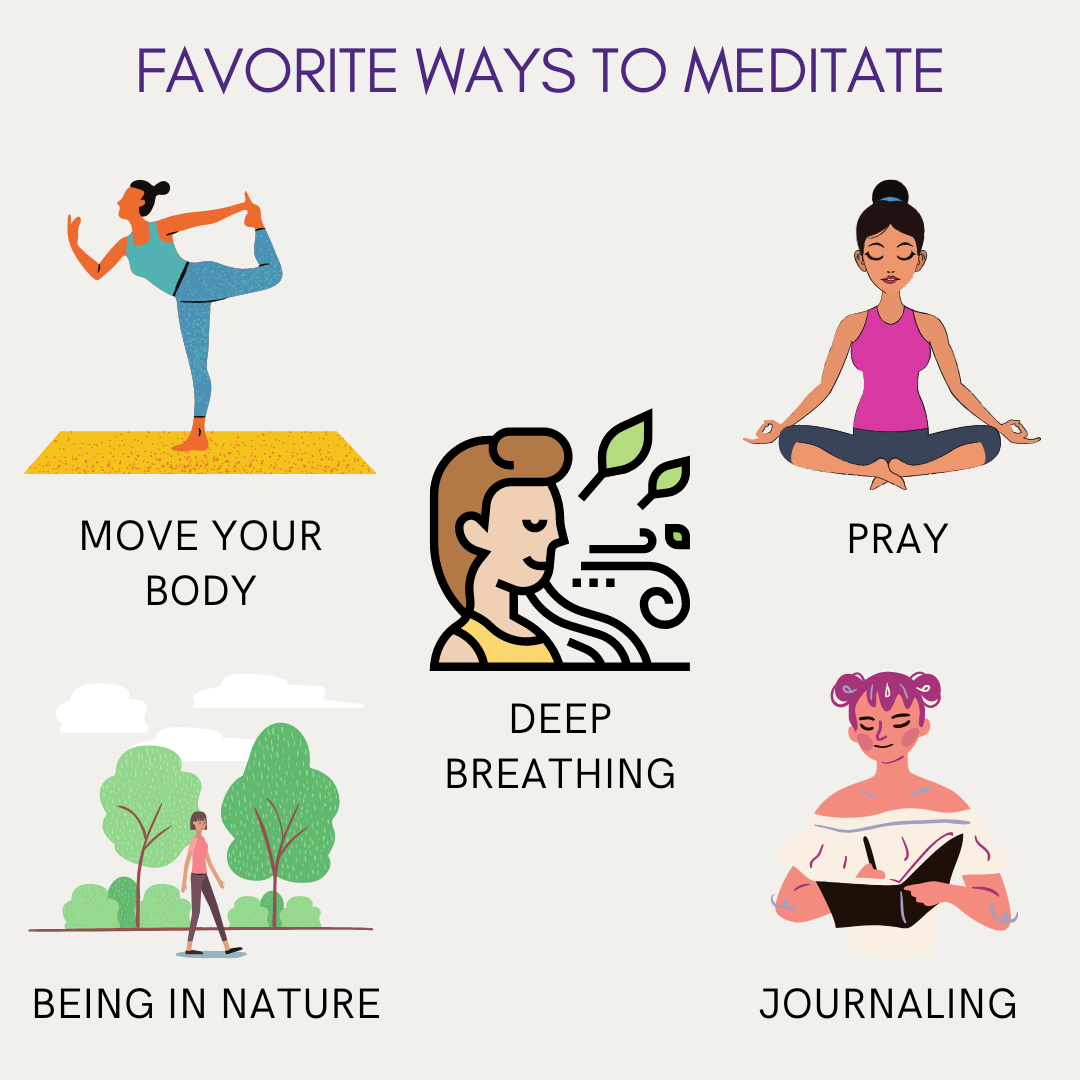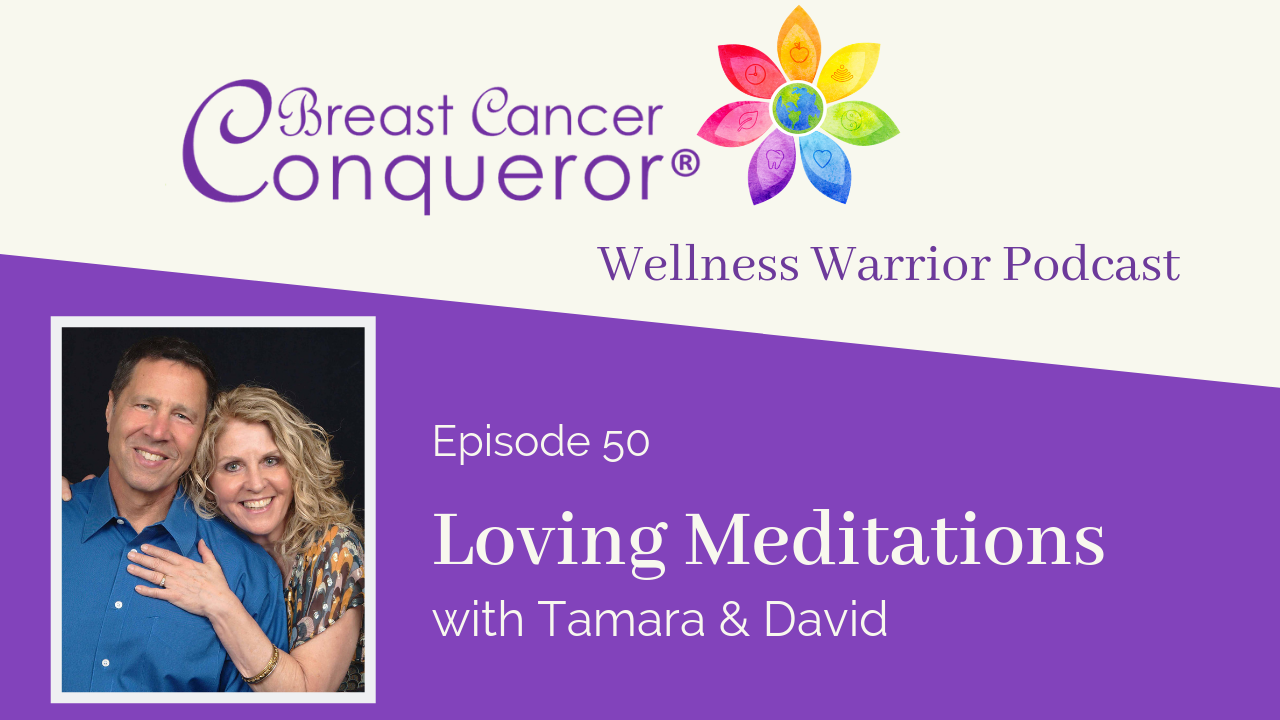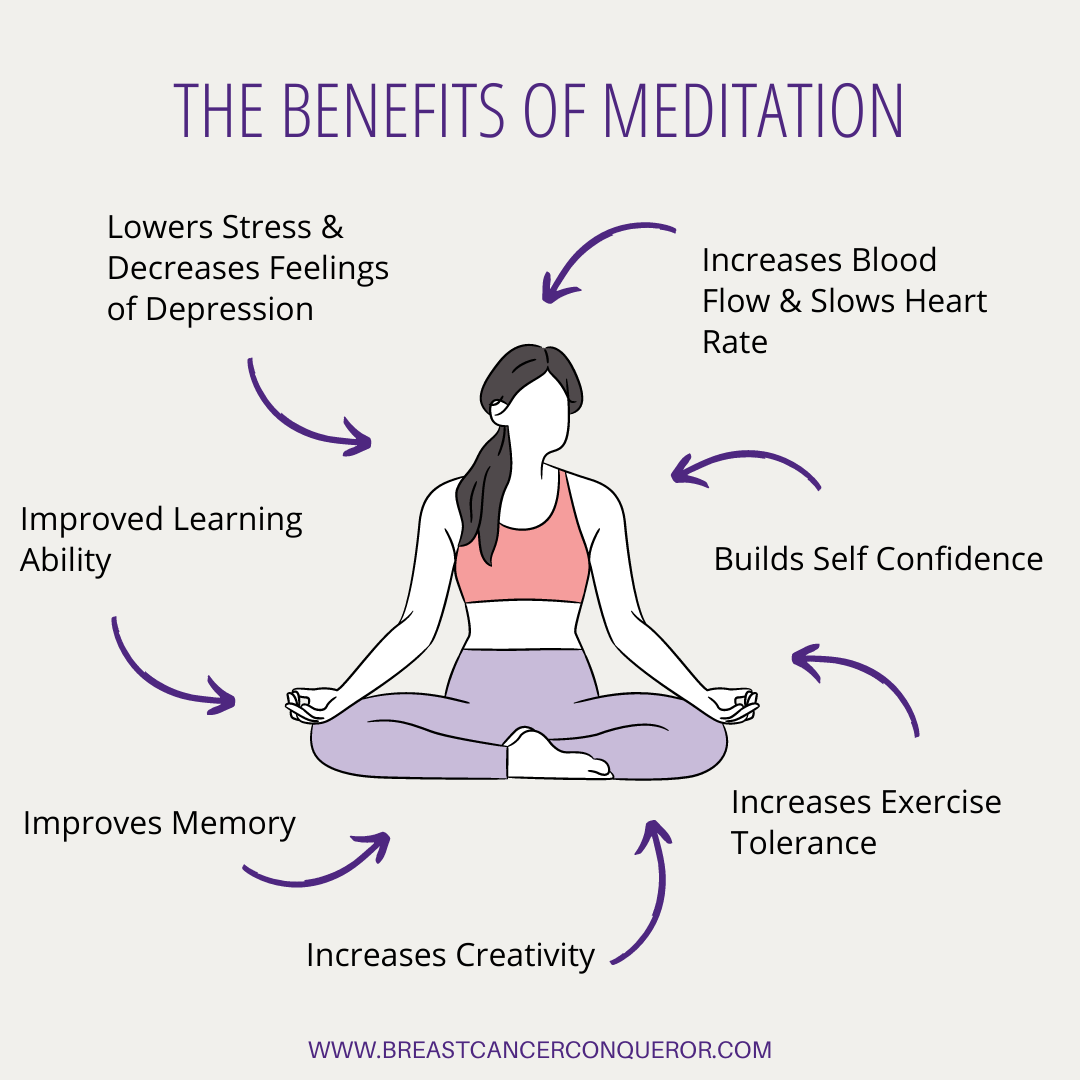
Meditation. We have all tried to do it and some of us have even had some amount of success with it. But let’s face it, most of us wind up feeling more frustrated (and even more stressed out) after 20 minutes of “just sitting there” than when we started! Meanwhile, the proven, yet elusive, benefits of meditation remain accessible only to limber young people with serene looks on their faces depicted in stock photos across the internet.
Meditation doesn’t have to be mysterious and it doesn’t have to be complicated either. What’s more, it doesn’t have to just be about sitting on a meditation cushion in a pretzel position doing nothing. It CAN be an amazing tool for healing. What’s more, there are many ways to do it! Here is the lowdown on meditation as well as 8 ways you can easily incorporate a meditative practice into your life. Some of them may surprise you!
Why Meditate?
This is not an article on lowering stress, but I couldn’t really write an article about meditation without touching on the topic. The reason most people meditate is to help lower their stress responses. I have written many articles on the hazards of chronic stress and how it raising the risk of everything from diabetes to cancer. You can learn all about the connection in this article.
Another reason why people meditate, surprisingly, is to heal from trauma. By calming the mind and focusing on one simple thing at a time (I’ll get more into that later), we can begin to gently unfold the onion peels of emotion and stuck energy that often hides deep trauma.
Close to 70% of adults in the U.S. have suffered some kind of trauma at least once in their lives and about 20% go on to experience PTSD or C-PTSD symptoms because of it. And remember that hearing the news that you have cancer (often by a conventional doctor in a conventional setting) can bring about trauma as well.
Do you have unresolved trauma? Odds are, you do. A great resource you can explore on your own is called ACE. ACE stands for Adverse Childhood Experiences. The ACE Study was conducted between 1995 –1997 on over 17,000 individuals at Kaiser-Permanente Medical Center in San Diego. Through its findings, researchers created a rubric to evaluate how the unresolved pain of childhood trauma may still be affecting a person emotionally and physically. You can learn more about ACE and find links to take the ACE quiz HERE.
What is Meditation?
Those of us who live in the Western world live a very different lifestyle than monks who practiced meditation high up in the Himalayas 100 years ago. For the different times we live in, we need different kinds of meditation.
According to the most mainstream sources, meditation is the “concentrated focus upon a sound, object, visualization, the breath, movement, or attention itself in order to increase awareness of the present moment, reduce stress, promote relaxation, and enhance personal and spiritual growth.” As I wrote in this blog back in 2015, it is also the act of consciously “suspending the normal stream of thoughts occupying your mind.”
Neither one of these definitions say anything about sitting still or even sitting down for that matter. To me, that means that any healthy way you can achieve this state of mind is okay in my book! Here are 8 modalities to help you get there:
#1 Deep Breathing.
Deep breathing is easy and works to lower stress responses almost instantly. Here’s how it works: Take an in-breath for a certain count (4 seconds, for example). Release and exhale for double the amount of the in-breath. Set a time and do that for up to 10 minutes, focusing in on the breath and simply allowing thoughts to come and go without judgment (and if you judge them anyways, remember that the judgment is also thought so just let it go). That’s it.
Why is this so effective at calming the mind and healing the body? Slow, deep breathing stimulates the parasympathetic nervous system and massages the vagus nerve. It also pumps oxygen into the blood. Harvard University cardiologist Dr. Herbert Benson did research almost fifty years ago that established the link between deep breathing and the relaxation response.
#2 Being in Nature.
Do you see nature around you? Maybe a tree outside your window or a potted plant sitting on an office shelf? You don’t need to book a vacation to the mountains to take advantage of all the meditative experiences nature can provide.
The practice of meditation in nature is simple. In it, we are using our eyes, ears, and even sense of smell to disentangle from the everyday stream of thinking and calm stress responses.
Set a timer for 10-20 minutes. Begin by sitting or standing and later on you can walk around if you want. Take in all around you. Breathe deep and exhale fully. Being in nature is often referred to as “meditation for your eyes” because of how soothing plants, trees, flowers, and water features can be to the nervous system.
In fact, according to research conducted at Vrije University Medical Centre in the Netherlands, simply looking at images of nature is enough to bring a person into a calm, balanced state. In Japan, meditation in and on nature is called Shinrin-Yoku, or forest bathing, which means to “let nature into your body through the 5 senses of seeing, hearing, touching, smelling and tasting.”
And if you live in a concrete jungle, no problem. Channels abound on YouTube and other platforms that stream nature sounds along with soothing music to help you relax and meditate. One that I particularly enjoy is a channel created by musician, videographer and director Tim Janis.
#3 Walking.
Again, decide on how long you want to do your practice. Set a timer if you need to. Then decide where you are going to go (or if you are just going to “wander”). No, you don’t have to go outside to do this practice, although many people chose to. You can pick a route around a room in your house if you want.
The point of walking meditation is, again, to disengage from the normal string of everyday, thinking patterns by focusing on each step while at the same time being aware of your surroundings. You can also repeat a saying with each step as well. For example, you can say:
“With this step, I am healing every cell in my body.” or “As I put my foot on the ground, I am grateful for my whole body and my healing journey.”
According to many studies, walking slowly and mindfully can help bring blood flow to the brain, improve digestion, improve sleep, booth creativity, and lower incidents of depression and anxiety.
#4 Eating.
Eating in a meditative way is sometimes called “mindful eating.”
Eating meditation is a great practice to improve digestion. The first step of digestion is actually the breakdown of food in the mouth through chewing. With mindful eating, chewing is done at a slower pace and with more focus and care.
Here is how you do it: As you begin a meal, take the time to really look at the food on your plate. Engage your sense of smell as well. Meditate on the taste of each morsel as you put it on your fork and then put it in your mouth. Notice how the food feels and how it tastes. As you swallow, notice how the food feels going down your esophagus and into your stomach. Take a minute to contemplate all the amazing and intricate mechanisms that allow you to digest food and extract nutrients. It is a slow process that takes some getting used to….especially if you are a “fast eater”.
 #5 Contemplation.
#5 Contemplation.
Contemplation is a way of disengaging from the stream of ordinary thought through the observation of specific ideas, questions, or situations with the “goal of receiving insight from the still small voice, inner wisdom or the Divine.”
Sometimes contemplation is called “contemplative meditation or prayer.” It is true that contemplation can move into more traditional forms of prayer. Contemplation is not rumination since you are not reinforcing repetitive patterns of thought. Instead, you are being open to insight by loosening your grip on established ideas while being open to new ones.
Contemplative meditation comes from the Greek practice of askesis or mental self-discipline. A 2018 study conducted at Loyola University Chicago found that contemplative meditation may have significant benefits in psychotherapy for people of various faiths.
The fact is that you are probably already doing some form of contemplation throughout your day anyway. For example, have you ever just sat at your desk and watched the cars go while you pondering a dilemma? Or maybe there was a time when you just needed to take a walk to “clear your mind?” While you were doing either one of these things, your mind may have been lightly holding on to thoughts of the situation at hand. These are both examples of contemplation.
Besides setting aside 10-20 minutes of contemplation on specific issues in your life, a good practice is to go outside of the box of your everyday reality by contemplating the big questions of life or focusing on a favorite quote, saying, or verse.
#6 Journaling.
Contemplation goes great with another meditative modality, that of journaling. This is because contemplation often creates great insights, and you are going to want to write those down somewhere!
For those on a healing journey, journaling can be helpful for expressing the “many deep emotions you experience that perhaps you are not comfortable in sharing with anyone else.” Research has proven that it works for disengaging repetitive harmful thought patterns, for opening up to new possibilities, and for healing as well.
A pilot study conducted in 2012 found that participants with Breath Cancer who journaled for 20 minutes just one time a week experienced less fatigue, fewer PTSD symptoms, and fewer negative thoughts than those who didn’t.
To use journaling as a meditative practice, it is a good idea to do it every day (especially in the morning) and also to have fun with it! Besides writing down experiences and emotions, you can also set a timer for 10-15 minutes, choose a random topic (any topic, even a physical object in your immediate environment will do), and simply write with no censoring, editing, judging, or crossing out allowed! Odds are you will be surprised by what you write. A great book to help with journaling meditation is Writing Down the Bones by Natalie Goldberg.
#7 Prayer.
Prayer has been used across the millennia as a way to connect to that which is bigger than ourselves so that we can gain a perspective about our own lives that we perhaps did not have before. When we connect with a “Higher Power” we are able to connect to the source of all life, we experience more inspiration and insight and more support than ever before.
Technically, prayer is using dialogue with a higher power as meditation for insight and expanded consciousness. You don’t have to believe in a particular Higher Power to practice it, but you do have to have some focus outside of your own personality to direct the dialogue to, even you call that your own inner guidance and intuition.
A big part of the Breast Cancer journey is having the courage to make healthy decisions in the midst of fear. A 2009 study found that doing a simple “Centering Prayer” every day helped to lower stress responses considerably. Other studies have found that those who have a regular way of connecting to a Higher Power, especially within a social setting, experienced greater rates of longevity in general.
Centering prayer helps to quiet the mind and settle into a state of rest (i.e. an interruption of negative thought patterns and the stress responses that go with them) where you can receive the inspiration of a Higher Power or God.

#8 Guided Meditation.
Finally, we circle back to a more traditional form of meditation, and one that has proven very effective for thousands of people throughout the decades. Guided meditation is using verbal guidance from someone else or with music (usually through an audio recording) to gently guide you away from typical modes of thinking and into a calmer state.
I want to talk about a particular form of guided meditation that may have particular relevance to you if you are on a healing journey with Breast Cancer. Loving Meditations is a new mindfulness app for Apple and Android that is designed for cancer patients and caregivers. Its goal is to lessen the feelings of anxiety, pain, discomfort, and stress that can come with a diagnosis.
Tamara Green and David Dachinger, the creators of Loving Meditations as well as the best-selling book Live Calm with Cancer (and Beyond…), were recent guests on the Wellness Warrior podcast. In a powerful interview, they shared their story about how meditation and mindfulness were what got them through David’s Stage 4 cancer journey and helped them both to heal. On their app, they have 1-minute meditations as well as longer tracks to fit any lifestyle.
Be sure to check out the interview HERE!
However, You Do It, Just Do It!
I hope the above list gives you a broader sense of what meditation does and how you may be able to incorporate it in some way into your own life. Whether it is one minute or ten, sitting meditation, walking meditation, or simply “mulling thoughts around and being open to new ideas” aka contemplative meditation, the fact is we were all wired for meditation in some way.
And for everyone, meditation can work for lowering stress and increasing healing. The fun part is figuring out how you can engage in its benefits in the unique way that is just right for you!


I like this. Thanks for sharing your wonderful message on meditation. I really need it. I hope to begin practice.
Dear Dr V, I am currently writing down 3 things I am grateful for ea morning in a journal. It’s a great meditation ! Also, from Good Morning I Love You, I am setting a timer for a 12 minutes to breathe and be in God’s presence , staying open to guidance , singing “ Spirit of truth, open my mind, Soul of Wisdom open my heart.”